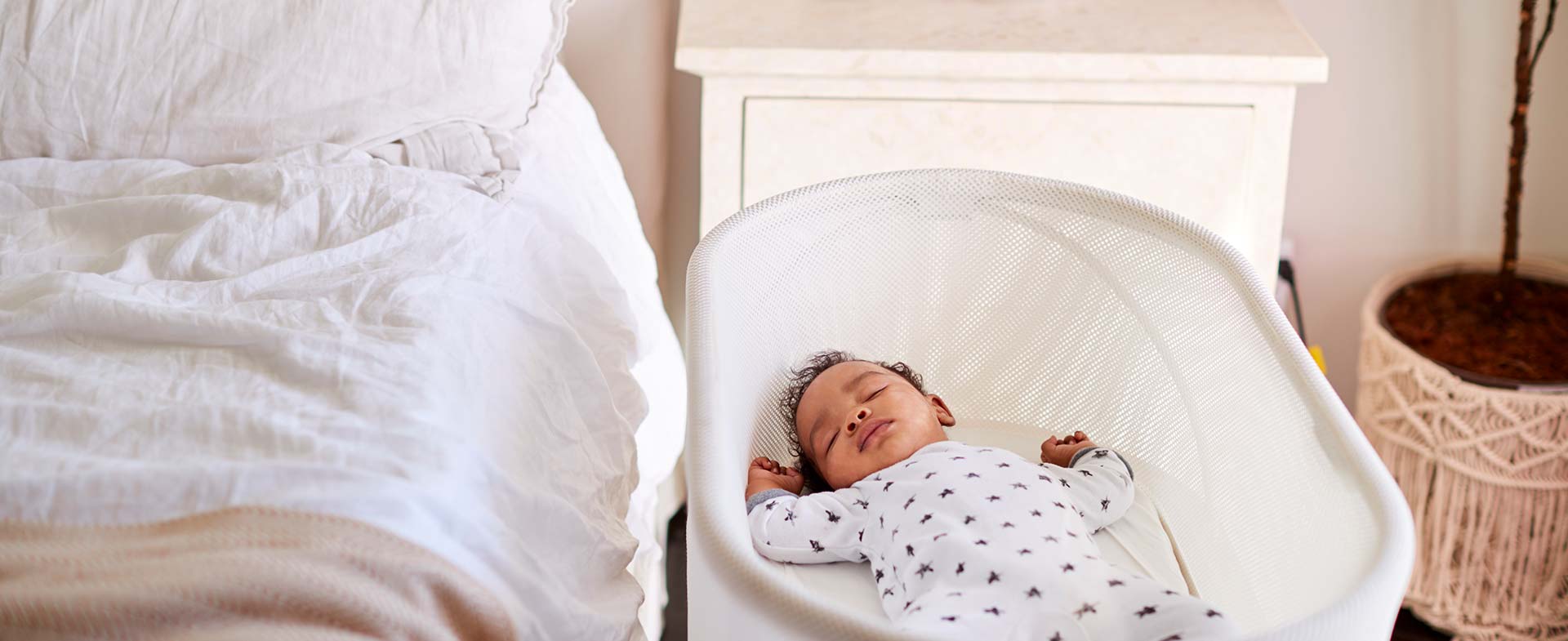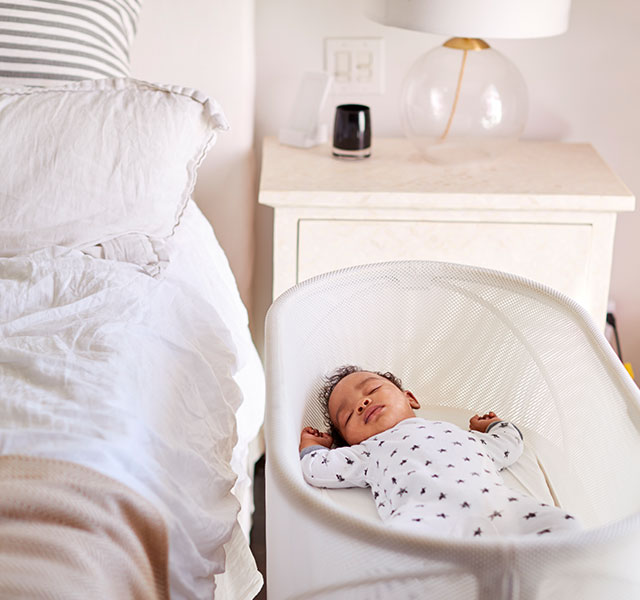The sleeping arrangements you choose for your baby can stir up controversy. From cosleeping to bed sharing to putting baby in her own room, opinions and practices about sleep strategies and sleep safety are all over the map.
Cosleeping is when parents sleep close to their child, but not necessarily in the same bed (for example, with baby in a bassinette or crib in the parents’ bedroom). Bed sharing means parent and baby sleep in the same bed. While cosleeping enhances parent-child bonding, experts warn that bed sharing can have catastrophic consequences.
Cosleeping Do’s and Don’ts
When it comes to infant sleep, safety should always be top priority. But with so much advice circulating in the media, it can be difficult for new parents to differentiate fact from fiction.
Regardless of your parenting style, pay attention to these sleep safety do’s and don’ts:
Do:
- Put babies to sleep on their backs: Research shows that placing infants on their bellies doubles their odds of dying from sudden infant death syndrome (SIDS). Babies should always be put to sleep on their backs.
- Choose a firm mattress: Choose a mattress that doesn’t indent when the baby lies on it. Also ensure the mattress fits the bed frame so there are no gaps.
- Room-in: The American Academy of Pediatrics recommends parents “room-in” with their babies for the first year — sleep in the same room, but in separate beds — to avoid suffocation. Babies breathe mostly through their noses. If a baby is in your bed and rolls into you, he or she may not be able to breathe. The same is true if you roll over onto the baby. Using a crib or cosleeper next to your bed keeps baby nearby but safe.
- Get naked: You don’t have to breastfeed or sleep with your baby to get the benefits of skin-to-skin contact. In fact, skin-to-skin care is especially helpful for dads. Whenever possible when you’re not sleeping, hold your baby next to your skin. It’s soothing and promotes parent-child bonding.
Don’t:
- Line a crib with pads or bumpers: Cribs should be completely bare. Bumpers and pads present suffocation hazards, even if you’re in the same room.
- Use pillows and bedding: A baby’s bed or crib should not have any plush toys, soft bedding or pillows. Babies should sleep on a firm, flat surface with a tight-fitting sheet. You can swaddle your child with a wearable blanket for comfort and security until he or she starts rolling over.
- Assume family members know safe sleep strategies: Always put baby to sleep on his back? Great! But keep in mind that the risk of sleep-related death rises if a relative or other caregiver ever puts him to bed on his belly. So it’s important to educate anyone who might put your baby to sleep.
- Let your baby sleep on a couch or sofa: Sleeping on soft surfaces isn’t safe for babies. They can slip into the crevice between cushions or get wedged against the back of the couch and suffocate.
Safer Sleep
In the United States, about 3,500 infants die each year while they’re sleeping. Many of these deaths are preventable. Avoiding unsafe sleeping arrangements is a critical step for keeping babies safe.
It’s important to note that even toddlers can suffer from sleep-related injuries. Older babies can suffocate on pillows and bedding. Adventurous toddlers can climb out of cribs. Restless sleepers may fall out of bed. Be sure to update your sleep safety strategies as your child grows up.
The best way to ensure your child is safe and comfortable: Create a consistent routine and make sleep safety your top priority. Children will learn to fall asleep — and stay in their own space — with a predictable, soothing nighttime routine. It may take weeks or even months to establish that pattern. But once you do, both you and your child will sleep more soundly.
To find a doctor or pediatrician at Henry Ford, visit henryford.com or call 1-800-HENRYFORD (436-7936).



